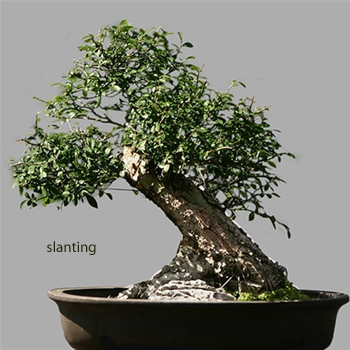 Bonsai Styles
Bonsai Styles
What is a bonsai? The word ‘bonsai’ originated from China and gradually spread throughout Asia. Bonsai signifies a tree gown in a small container. The tree is usually made to look like a mature tree. There are different techniques that are used to manipulate the growth pattern of these miniature trees. These techniques include pruning, and wire training. The manipulation of the tree provides the bonsai with a distinctive characteristic that increases the value and beauty at it matures over the years. There are several distinctive styles bonsai enthusiasts try to convey in their bonsai trees. The three most commonly found bonsai styles include the Upright Style, Slanting Style (Shakan), and Cascade Style (Kengai).
Upright Style
There is a clear distinction between the front and back face of the tree. The trunk serves as the main axis for the style of the bonsai tree. This style serves as the most popular style for bonsai beginners. The leaves and branches of the bonsai are trained to grow upright at an angle.
Slanting Style (Shakan)
The trunk of this style is slanted at an angle. The slanted angle of the tree may look as though the tree was blown sideways by a gust of strong wind. Branches of this style are horizontal and are slightly drooping.
Cascade Style (Kengai)
Most commonly found amongst Junipers and Pine bonsai trees. The Cascade style is one of the most easily recognized styles of bonsais. The growth of the tree is downwards. Inspired by trees growing out from cliffs, the trunk of the tree dips below the bottom of the pot. Anyone who is looking to train their bonsai will find it useful to use these distinctive styles as starting points for developing the characteristic of their bonsai tree.




